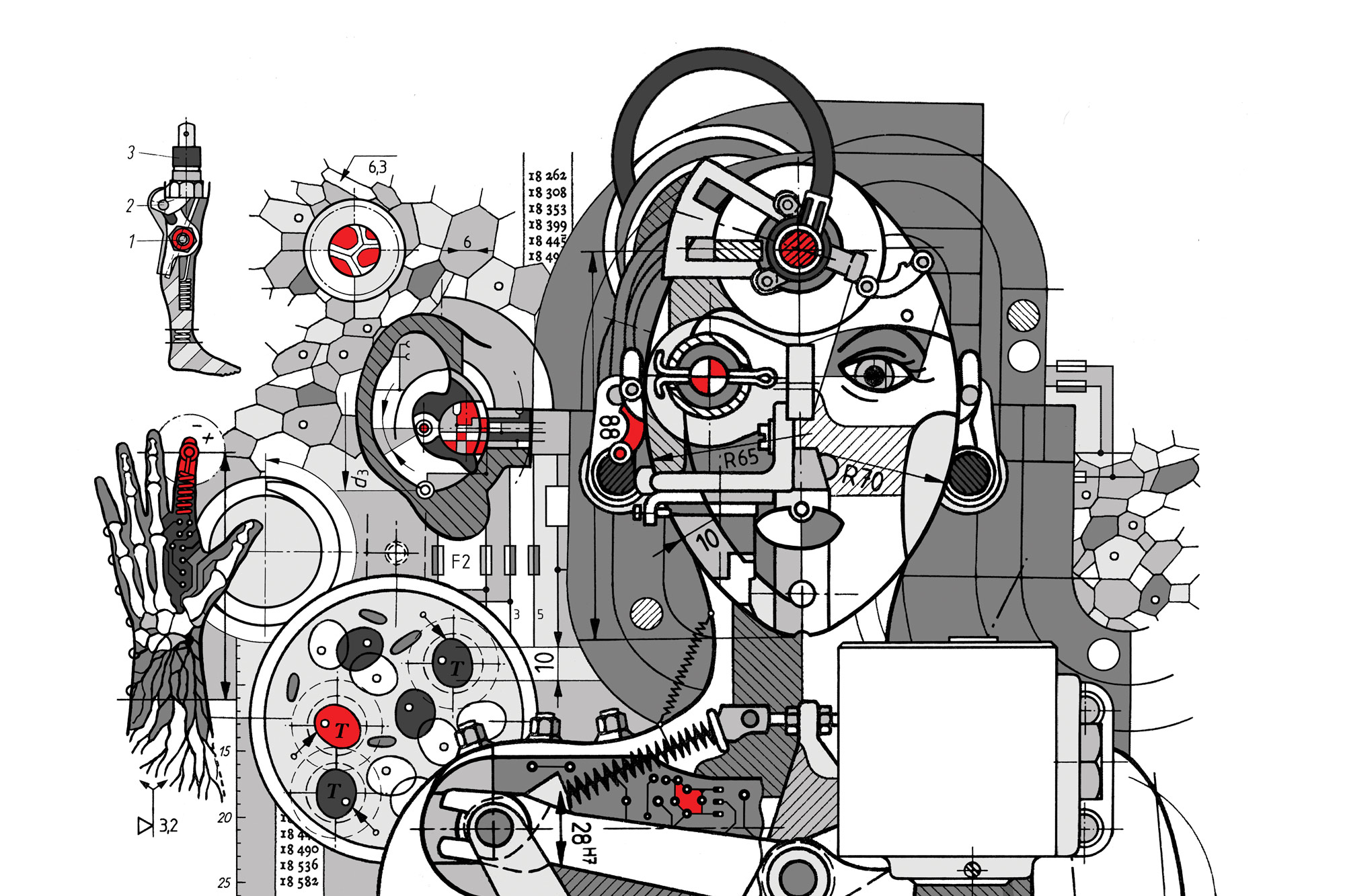

The human body is malleable—just ask any athlete or astronaut. But the pace at which we can naturally reshape our physiology is sluggish compared with the quick fixes technology can offer. Why bother with years of memory training when you can carry a search engine on your wrist? As augmentation improves, our species may increasingly rely on much more invasive and permanent devices. Here’s what happens when our gadgets get under our skin—and make us reexamine what it means to be human.
1. Altering genes
CRISPR, a relatively easy-to-use gene-editing technique, could provide an escape from ailments that have plagued us for eons. It can slice through DNA, cutting out defective segments and inserting healthier substitutes. Curing individuals of genetic diseases is likely in the near future, but the ethics of alterations before birth are murkier: Unintended side effects of a DNA tweak made to eggs or sperm could ripple through future generations.
2. Hearing color
Until 2004, artist Neil Harbisson experienced the world in shades of gray. Then he and a friend created the Eyeborg—a light-detecting sensor that is now surgically attached to his skull. This translates electromagnetic light waves around him into sound frequencies, turning color into musical notes. After he used the device for eight years, researchers found it may have helped Harbisson form new connections between the auditory and visual areas of his brain.
3. Curing cancers
Oncologists have already managed to put some types of cancer into remission with CAR-T therapy. It works by harvesting a patient’s T-cells (a type of white blood cell), adding a receptor to the outside that targets their cancer, and then reinfusing them back into the body. Because the re-engineered cells replicate on their own, they could theoretically provide long-term protection against that type of cancer, warding off any future recurrences.
4. Opening doors
Pets have had implantable microchips for decades, but lately, humans have experimented with sticking radio-frequency identification (RFID) tags into their own bodies. You can program such inserts to open your car door or unlock your phone. Similar tags might one day even monitor your vital signs. But progress is slow. Privacy concerns abound in the untrodden territory of biological data storage, plus upgrades are a pain.
5. Sensing fields
Levitating paper clips is a fun party trick, but extrasensory perception is the real goal when body hackers embed tiny magnets in their fingertips. Every time users pass through a magnetic or electric field, like those emitted by speakers and microwaves, they feel a tiny tug inside the augmented digit. More-sophisticated future sensors might use that sensation to encode information about all kinds of otherwise invisible forces.
6. Replacing limbs
The ideal prosthetic would feel like it was actually part of your body. Osseointegration makes that possible. A direct connection between the bone and the artificial appendage allows for greater mobility, stability, and comfort, since the deep integration means devices can move and adapt with the body as it grows bone. Most traditional prosthetics, which attach to the body with a socket, only become less secure over time.
This story originally published in the Out There issue of Popular Science.
